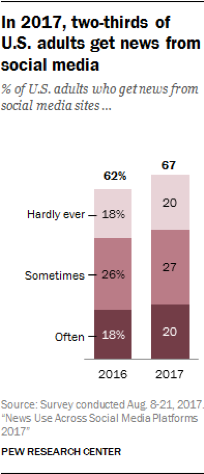

For decades, Americans got their daily information predominantly from three sources – radio, newspapers, and television. News magazines, like Time and Newsweek, provided a more in-depth analysis of current events and despite being upwards of a week behind the news cycle, still held influence with the public. Today, that model of news consumption has dynamically shifted.

Factional Viewing
The growth of talk radio in the mid-1980s and the Internet a decade later fractionalized news consumption like never before. By satisfying Americans’ insatiable demand for instantaneous updates, while comforting large swaths of the populace that had lost their trust in many traditional media outlets, talk radio conditioned some consumers to seek alternative sources that fall more in line with their point of view.
Internet News Consumption Grows Yearly

Strategic Impact
Penetrating the public consciousness in an environment of factionalized information consumption requires a segmented and variable channel campaign that encompasses both earned and paid media from trusted voices. Often a smaller, targeted campaign can produce the dollar-over-dollar impact that is superior to a broader, expensive ad buy. Strategic decisions should be driven by segmenting larger audiences into smaller pieces, audience analysis, and message targeting. Our team of professionals can help you sell your message, identify your audience, develop the right messaging and cost-effectively deliver impact.

Let TDS work with you to pinpoint your specific needs and help you develop a comprehensive, integrated public affairs solution to help you win.